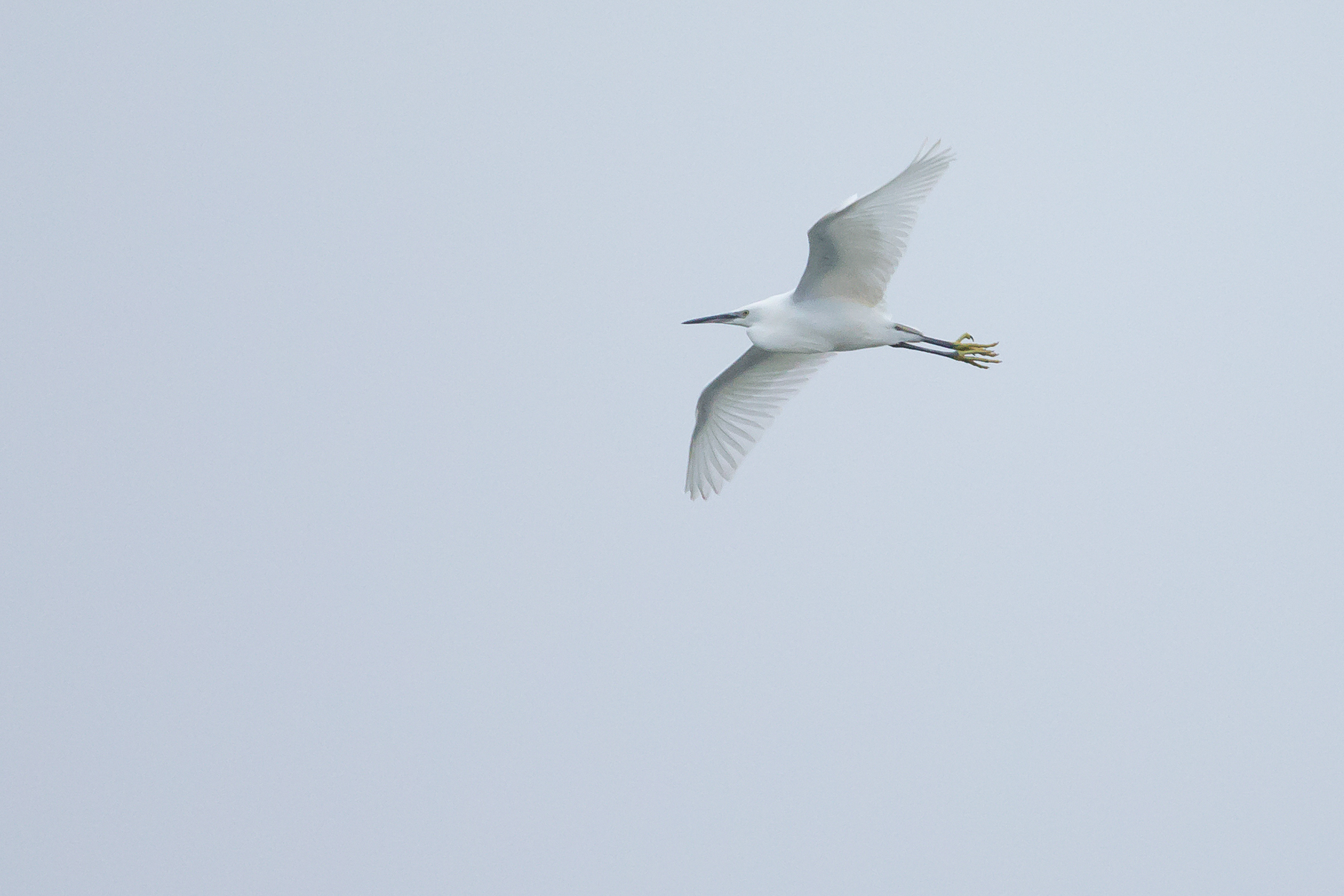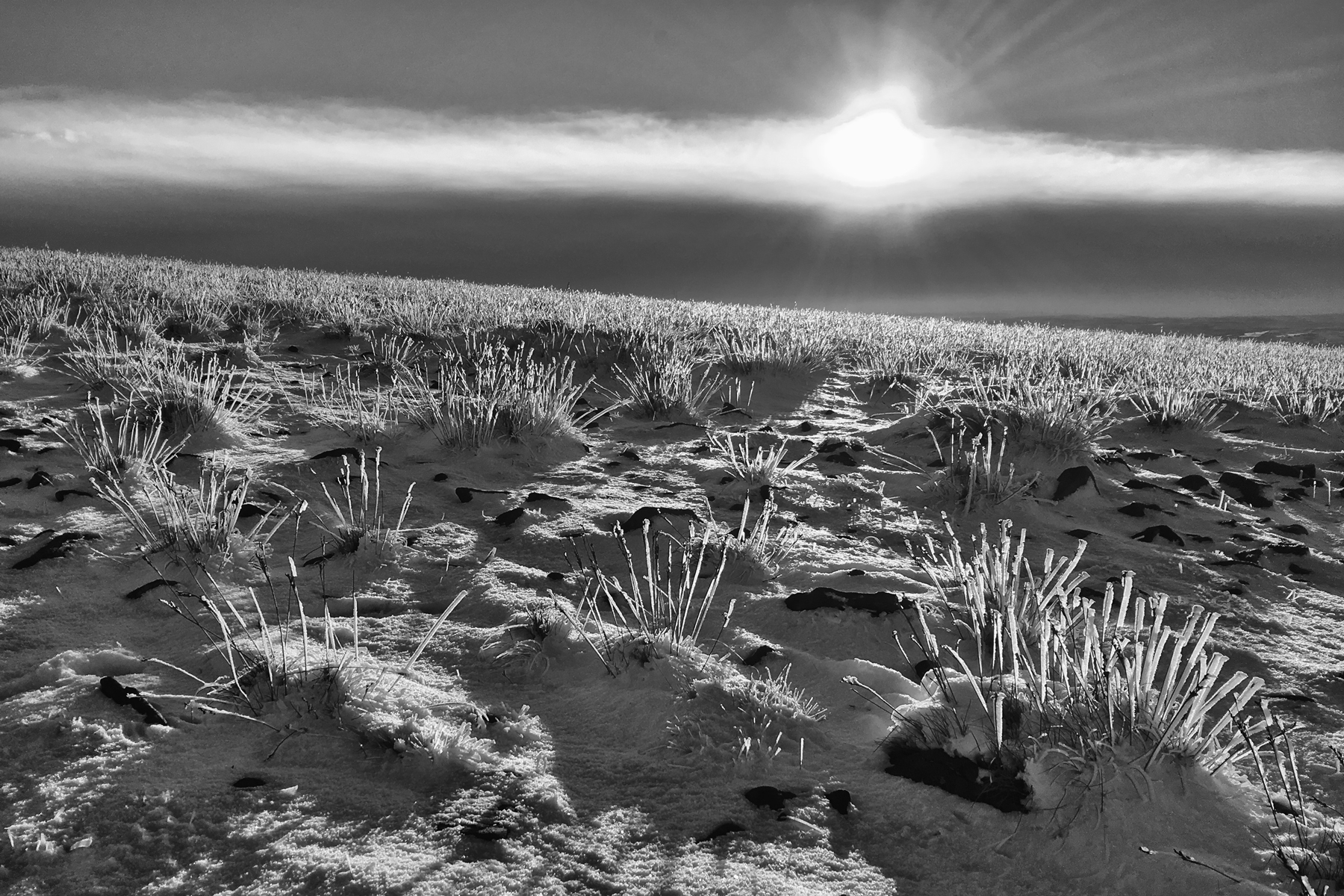Pendle regular Martin Naylor searching for Snow Buntings on the Downham slope
The last couple of Sunday morning walks on the riverbank have been quite productive, last Sunday saw a record 59 species, including Little Egret. It is still present today ranging between Hothersall Hall and Lower Alston Farm and today was another respectable 50 species. Single Common Snipes have featured on both weekends too, both flying over, presumably displaced by the hard weather. Other birds on the move at the moment were Herring Gull (163 on 3 December - usually around 10-30) and Northern Lapwing (168 on 10 December). The Little Grebes continue on the river at Red Bank and up to three oystercatchers appear to be wintering on the same stretch. Another weather related record was a flock of 18 Meadow Pipits by the sewage works . In contrast, numbers of birds presumably pushed out by the snow have fallen like Goldfinch (41 week 46 to only 6 on 10 December) and Chaffinch (45 week 47 to only 14 on 10 December). I am planning to keep up the counts as long as I can this winter following the same route more or less and for the same length of time and it will be interesting to see the results.
After over 30,000 steps on Pendle Hill and only two Snow Buntings flying over I'd had enough. Well at least it was good exercise! A Meadow Pipit flying low over the summit on Monday morning was also part of the hard weather movements. They are rarer than Snow Bunting up there at this time of year.
Little Egret at Ribchester. Not much you can do at 8000 ISO!
Frozen Snow Bunting food in the dotterel area on Pendle Hill





